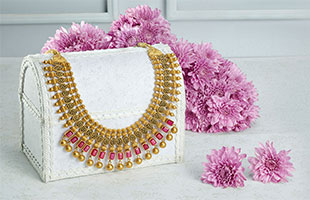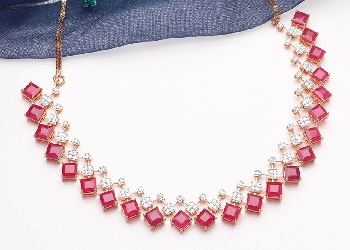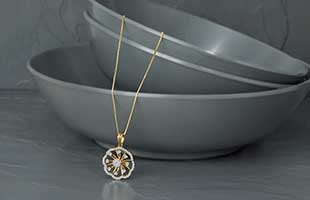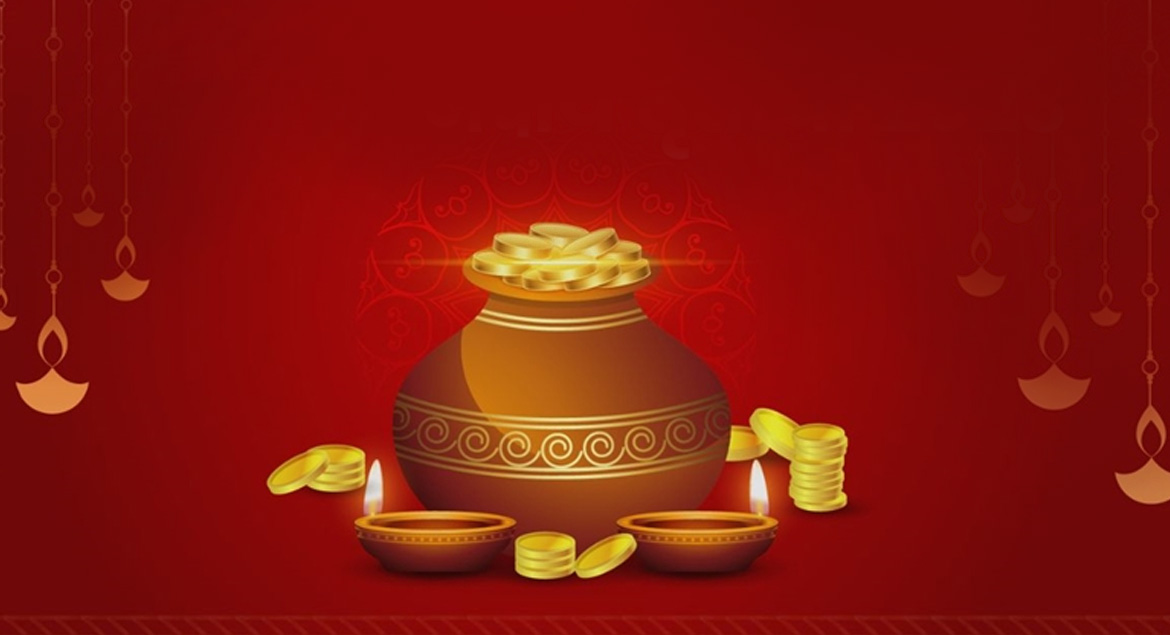The earliest Indian wedding jewellery traditions had necklaces made solely out of gold but now, the designs have extended to modern ones with diamonds, gemstones and pearls and even coloured glasses or enamel works. This allows choosing bridal jewellery to match with the bridal attires.
Most brides choose to wear more than one necklace of different lengths and designs. This is commonly seen in South Indian wedding jewellery traditions. In North Indian wedding jewellery traditions, most brides go for a large statement piece to cover the skin above the neckline of the bridal dress with magnificent detailing.
Finger rings
No bride’s fingers lay bare at her wedding. Indian wedding ring traditions are rich in variants. The bride may wear her engagement ring among other rings from her wedding jewellery set. The bridal designs range from simple bands to intrinsic designs with or without coloured gemstones, diamonds or coloured stones.
Indian grooms also wear finger rings and engagement rings. Finger rings are a favourite part of wedding jewellery and may have personal sentimental values as well. It is also a common choice of jewellery given as gift to the new bride by her friends and family.
To find more information on jewellery gift, check: Buy Gold gifts online
Bangles
There are quite some beliefs in Indian traditions invested in bangles, too. Bangles are very conspicuous and catch eyes very quickly. Indian brides have bangles in abundance, of different kinds, ranging from gold and diamond bangles to metal and glass bangles in red and green.
Indian wedding traditions in bangles consider wearing bangles as a lucky symbol for the well-being of the husband. Most North Indian brides are seen wearing lots of bangles even during their honeymoon.
Waistbands
In Indian wedding jewellery traditions, the waistband also known as kamarband used to adorn the bare waist of the bride. The crafted jewel drew attention to the feminine curves. However, it had lost its popularity for a while. But modern brides are going back to including this traditional ornament to their bridal jewellery sets.
Anklets
Anklets, traditionally called payal, are beautiful ornaments of importance in Indian wedding jewellery traditions. The bride’s arrival is announced with the musical jingles from her anklets. Wedding anklets are also worn as simple chains around the ankles, without the tiny bells that tinkle.
Toe rings
A popular member of south Indian bridal jewellery, toe rings are worn on the second toe of each foot and symbolize marriage. It is synonymous to the finger wedding ring worn in western cultures and is a sign of marital status. In the Indian wedding traditions, a woman is not allowed to take off the toe rings until her husband is no more.
These are the staples of Indian wedding jewellery traditions which adorn a bride head to toe. Gold jewellery is a highly deemed component of Indian weddings and the assortments among designs, craftsmanship and types are extensive. When choosing bridal jewellery to spice up your Indian wedding, try breaking cultural lines and experiment with dresses and jewellery from outside your local trends. A little extra glitter of unique jewellery to your wedding won’t hurt. It could make your memories and photographs all the more stunning.













.jpg)

